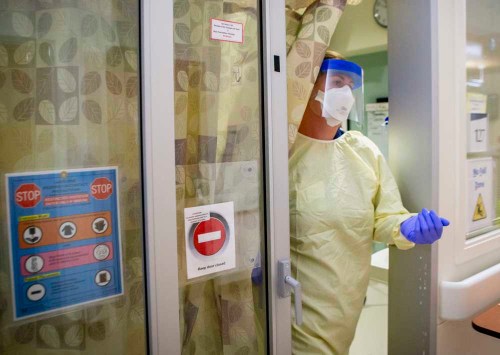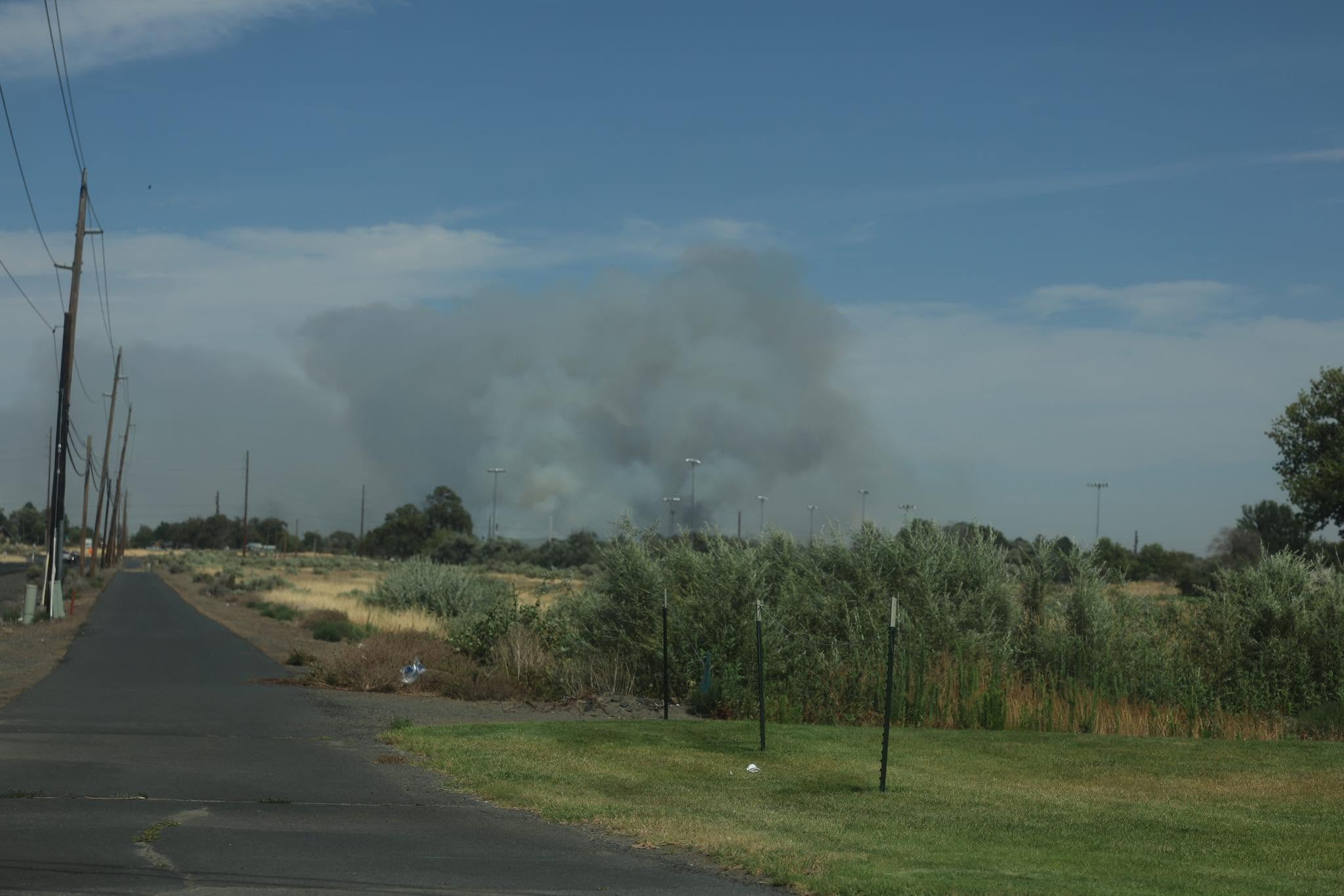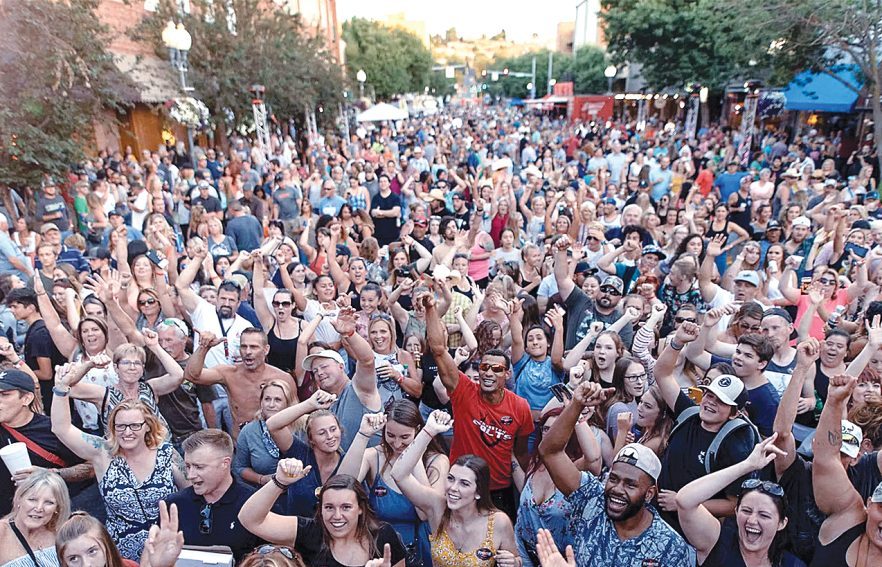Health care workers endure difficult conditions, exhaustion through delta variant crisis
Published 5:00 am Tuesday, August 24, 2021

- Judith Lindsey exits the room of a COVID-19 patient Thursday, Aug. 19, 2021, in the critical care unit at CHI St. Anthony Hospital in Pendleton.
PENDLETON — There have been moments over the past month where Robert Maranville felt that, no matter how hard he tried, he wasn’t doing enough.
Maranville’s job, put simply, is to help people breathe. As one of a handful of respiratory therapists at CHI St. Anthony Hospital in Pendleton, he operates ventilators and high-flow oxygen and delivers breathing medications to patients. These days, most of them have COVID-19, and nearly all are unvaccinated.
“It can be overwhelming when you’re giving 100% and it’s still not enough,” he said.
For 12-hour shifts, he rushes from room to room, taking on and off his personal protective equipment. Sweat drips from the gowns, masks and face shields. He cares for patients who languish in isolation for weeks. With time, some improve. Others don’t.
“With this pandemic, I’m taking care of patients I’ve taken care of for years,” he said. “I know them. I know that they’re my neighbors. They know me by name. When they come into the ER, they ask for me by name. I’ve taken care of couples, people from the same family — sons and fathers, daughters and mothers who are a couple rooms away from each other. It’s definitely emotionally taxing.”
The pandemic has taken a toll on workers across many industries, but perhaps no line of work has endured more than health care workers.
Hospitals across Oregon now are facing the largest deluge of COVID-19 patients since the pandemic started due to the delta crisis. Umatilla County’s hospitals are no exception, and their staffs say they are exhausted.
“Right now, the staff are tired,” said Brian Patrick, vice president of nursing at Good Shepherd Medical Center, Hermiston. “A lot of what’s weighing on them is that there’s an answer out there for the pandemic. But everything’s so politicized that the protection isn’t being taken advantage of. We continue to see a rise in patients coming through the emergency department every single day and I don’t expect that to lighten up at all.”
This makes life away from the hospital difficult for some health care workers. Some nurses say they are struggling with anxiety and burnout. And the political division, staff shortages and shifting policies and procedures has left them struggling to cope.
“I can’t have normal conversations with people not in health care and listen to their political ideology or health care thoughts without attaching a patient in a difficult situation to that,” St. Anthony nurse Judith Lindsey said, crying. “I don’t think that people realize that’s what’s happening when they talk to people that are seeing this day-to-day. It’s a bit emotional to me. And that takes a toll, for sure.”
When Maranville gets home from work, he has little to no energy. He takes off his scrubs and shoes in the garage and immediately heads for the shower before helping put the kids to bed.
“But that’s as much as I do,” he said. “My wife carries all the burden after my shift. If she knows I’ve had a long and busy shift, she’ll just let me shower and let me veg out and eat dinner.”
COVID-19 hospitalizations, deaths spike
Over the past month, COVID-19 hospitalizations in Umatilla County surged to levels never seen before during the pandemic. As hospitals across the region filled to the brim, staff were left scrambling, often reaching out to more than a dozen different hospitals before finding an available bed for patients needing a higher level of care.
Lindsey recalled one patient who couldn’t get a higher level of care because hospitals everywhere were full. They didn’t have the equipment nor expertise at the time to care for the patient, she said. That patient didn’t make it.
“That was a very sad moment for me, and for all my coworkers, because we were just doing the best that we could,” she said. “We knew it wasn’t enough. It’s an indescribable feeling as a health care provider.”
During the past week, Umatilla County has reported nine COVID-19 deaths. That’s the most the county has reported in a single week since the pandemic began. They died in nursing homes, hospitals and in their homes. One victim was just 29 years old.
More than 70 people have been hospitalized with COVID-19 at St. Anthony and Good Shepherd since the beginning of August, according to hospital spokespersons. But for some workers, those data points do little to encapsulate the feeling of caring for patients for weeks on end.
Galen Thompson, a nurse in St. Anthony’s critical care unit, said the most difficult moments come while caring for couples and family members at the same time. She recalled early in the pandemic when an elderly couple was hospitalized with COVID-19. Only one of them survived.
“That was sad,” she said. “That was difficult.”
At times, Thompson has had to tell family members of COVID-19 patients that they can’t see their loved ones. Health care workers can put the patients on Facetime, “but that’s just not the same,” she said.
Misinformation runs rampant
In addition to what’s faced in pandemic hospitals, Thompson pointed to a stressor that several health care workers say has made their jobs even more draining — social media.
Misinformation and skepticism over the seriousness of the pandemic has left some health care workers feeling unappreciated by a community that scoffs at masks and distancing and doubts vaccinations. And that skepticism also stretches to some health care workers, too. Multiple health care workers said their coworkers are reluctant to get vaccinated.
“I try not to even look at the stuff, because it is so maddening to know what’s going on and to hear people say it’s not real or it’s being overplayed by the media,” Maranville said.
Some patients don’t even believe they have COVID-19, despite their test results and their symptoms, multiple health care workers say.
“I’m hoping that some of these patients that decided not to get vaccinated and got ill can share their stories with other people,” Lindsey said. “That could be something that positively impacts other people’s choices.”
Hospitalizations during the past week have lulled slightly, but with large summer events bringing people together en masse, health care workers said they are waiting anxiously for cases to ramp up again.
“As the number drops, we’re wondering when the next wave is going to hit us,” Patrick said.
That makes it even more essential for people to get vaccinated, health care workers say. Lindsey said she encourages unvaccinated COVID-positive patients to share their stories, hoping they might change a few minds.
“Our masks and our vaccines aren’t all for us,” Lindsey said. “They’re for our community. It’s community health. So much of what we’re asking our community to do is not for the individual; it’s for everyone.”
Lindsey retains one memory she considers emblematic of the health care workers’ experience through the latest surge.
On a recent night, the emergency room was slammed with COVID-19 patients, many of whom were not doing well. Only a skeleton crew was working, Lindsey said, but “everybody in the entire hospital — no matter their politics, no matter their ideas about the vaccine” worked together to take care of everybody.
“It’s kind of a silver lining to me that there’s a lot of divisiveness going around right now,” she said, “but when it’s needed, people come together.”









